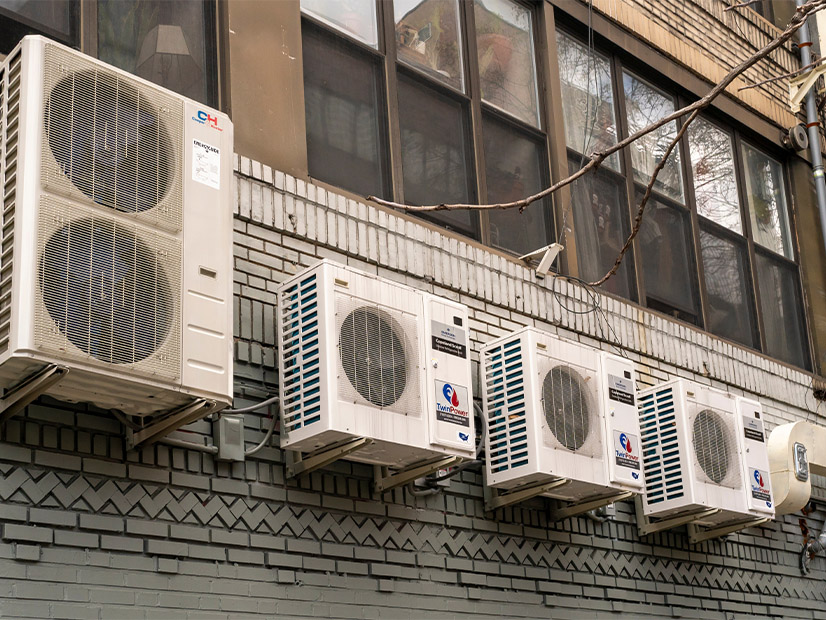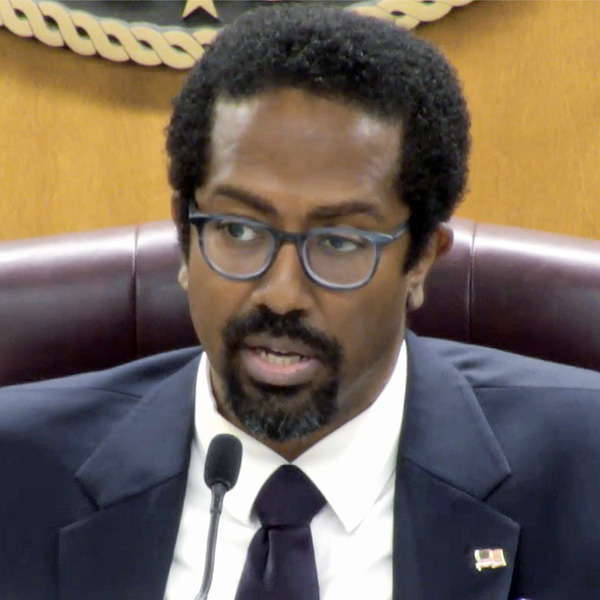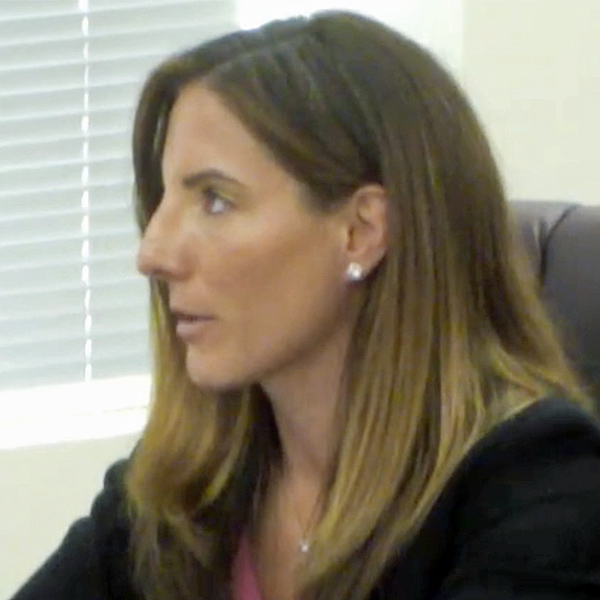The competing goals of reliability, sustainability and affordability converged Thursday as the New York state Public Service Commission wrestled with the mounting costs of the state’s energy transition.
Department of Public Service staff provided the first of what is expected to be a series of annual reports on the agency’s efforts to implement New York’s Climate Leadership and Community Protection Act (CLCPA).
The landmark 2019 law is intended to decarbonize the state over the next quarter century and simultaneously counter decades of environmental injustice.
The costs will be massive, but the details are unknown and likely unknowable at this point.
The figure $270 billion has been thrown around, which is not as big as it sounds when spread over 25 years in a state whose gross domestic product is $2 trillion a year.
But it does not reflect the rampant cost increases of late, nor the delays and cancellations being seen in New York’s renewable energy development pipeline.
Also, the costs will not be spread evenly among the state’s 20 million people.
The federal dollars everyone is counting on to help cover the cost may not last forever, and presumably someday will have to be paid back with interest by federal taxpayers, including those in New York.
Finally, the benefits from all that spending are unknown and will not be reflected entirely in utility bills. Reduced medical expenditures, prevented societal costs, energy efficiency/conservation and increased economic activity are a few of the presumed positives being counted against capital costs as the state calculates a net benefit of more than $100 billion from CLCPA spending.
The PSC and the staff of the DPS will play a key role in much of this spending, as they regulate the infrastructure by which electricity is delivered and the utility rates by which New Yorkers pay for it.
The three primary topics of discussion at Thursday’s PSC meeting all revolved around that theme, and the escalating costs entailed.
Building Electrification
The commissioners unanimously voted to adopt a strategic framework to redirect and streamline the state’s energy efficiency and building electrification efforts (Cases 14-M-0094 and 18-M-0084).
Both cases predate the CLCPA, but they are an indispensable part of any decarbonization and net-zero strategy. Thursday’s order will update the efficiency efforts to better align with the overarching goals of the CLCPA.
Efforts to date have been inadequate in meeting the needs of low- and middle-income New Yorkers, the DPS staff concluded during its review. The new framework will give greater responsibility to the New York State Energy Research and Development Authority for reaching disadvantaged communities.
The order directs NYSERDA and utilities to file within 90 days proposals totaling $1 billion a year from 2026 through 2030, and to look beyond ratepayers for funding.
“Today’s action establishes this framework where we can streamline and scale program delivery,” PSC Chair Rory Christian said, “by moving away from what we previously looked at as individual utility-level goals towards a focus on more statewide outcomes.”
Commissioner Diane Burman spoke at length about previous efficiency initiatives being a series of good-faith efforts marred by missteps and poor coordination.
Commissioner James Alesi countered with a comparison to the race to put a man on the moon. “There’s going to be failures and there’s going to be frustration,” he said.
Along the way, predicted costs will change and unanticipated costs will arise; new legislation and technology may move the goal line and the path by which it is reached. “But there will be no retreat,” he said. “There cannot be a retreat.”
Commissioner John Howard drilled down on hidden and undisclosed costs. About 20,000 housing units are being weatherized per year across the state, he noted. To meet CLCPA goals, that needs to be 200,000 a year for many years, at a cost of far more than $1 billion a year.
Nonetheless, he called it the first reality-based order he had seen in a long time.
CLCPA Update
DPS Director of Policy Implementation Jessica Waldorf summarized the agency’s inaugural report on the CLCPA implementation (Case 22-M-0149).
The staff-generated review was loaded with technical details such as greenhouse gas emission reductions since 1990 (46%) and a summary of the PSC orders that will help carry out the CLCPA.
There also was a summary of estimated costs authorized as of mid-2023 in support of CLCPA goals: $43.76 billion.
Waldorf said the figures are conservative estimates, and some of the spending was authorized before CLCPA.
The figures will evolve over time, be incurred and paid over an unknown amount of time, and be recovered through a variety of means, not just incremental costs to ratepayers.
But the report gave no estimate of costs to come.
And so began another round of commentary.
Commissioner Tracey Edwards said: “I want to see how we can, for the next annual report, do a little bit more of a deep dive on what you expect to happen.”
Berman, too, asked for something more than a retrospective report, as costs are escalating rapidly and are disproportionately being recovered through rates.
“Folks need to understand what it means, and the challenges going forward,” she said. “We have an obligation to look at the total.”
Howard said: “New Yorkers are desperate to know what this is going to cost. The rhetoric around the CLCPA writ large is, don’t worry, it pays for itself. I think we see from our brief snapshot in 2022 … no, it doesn’t pay for itself.”
Commissioner John Maggiore said there are three enormous challenges at play: Keeping energy affordable and reliable while achieving CLCPA goals. “I don’t think achieving any of these things is going to be easy.”
Waldorf said the state has the advantage of a long head start in planning and early results.
“There’s a lot of anxiety out there about how we can actually achieve the goals of the CLCPA but I think we’ve learned a lot through the decades of work.”
The goals will be difficult to achieve, and the shift of investment will need to be significant, she added, but multiple agencies will use every means available to reduce the cost to ratepayers.
One Case of Many
Spiraling consumer costs came to fore yet again in a rate case before the PSC on Thursday, sparking some of the most passionate comments in the lengthy meeting.
The utility with the most customers in the state, Con Edison, in early 2022 sought an increase of 17.6% in delivery charges for electricity and 28.1% for gas, which it calculated would boost customers’ total bills 11.2% and 18.2%, respectively, and give it a combined $1.7 billion in new revenue (Cases 22-E-0064 and 22-G-0065).
It justified the request, in part, by saying it will be spending money on CLCPA-related projects.
This did not go over well with the public and public advocates. The two cases generated more than 7,500 comments.
After investigation and negotiation, the utility, DPS and stakeholders agreed to a pair of rate plans that will give Con Ed a revenue hike of $1.93 billion — 13.5% more than it asked for — but spread that over three years instead of one.
Edwards cast the lone vote against approving the deal.
“I have a tremendous concern about the structure and the process, because we do have a responsibility for balance,” she said, especially with CLCPA looming — “what are all the other investments that have to be made?”
Many families in New York City are still rebounding from the economic crisis wrought by COVID, and have not reached stability, Edwards said.
“My biggest concern, that I just cannot get past, is that the starting point that the utility put in here,” she said. “I just don’t get it. I don’t understand the world they are living in. … We have to change this process.”
Howard tore into the magnitude of the taxes and fees levied on utilities by New York City. (DPS says property taxes account for 21% of a Con Ed electric bill and 15% of a gas bill.)
A majority of the City Council wrote to PSC, urging it to reject the rate proposal, but the council approved without debate an increase in the property tax charged to Con Ed, Howard said.
This will only get worse as Con Ed spends billions on infrastructure needed to electrify the nation’s largest city, he said.
“There is a boomerang of even greater revenue to the city of New York for that expense. As we clean up the environment, we put in this automatic enrichment to the city of New York.”
Christian spoke in more diplomatic terms about the need to pay now for future benefits, and the pain of doing so.
The 7,500 comments are written in different tones and perspectives, he said, but share a common theme: “Recognition that New Yorkers everywhere still face economic challenges coming out of the COVID pandemic. These hardships are only going to be exacerbated further by rising prices.”
Christian added: “I have solace in the fact that these investments are being used to reinforce much of the work we’ve already done in building the system of the future … and creating a better platform from which we can attain our climate goals and maintain reliability of the system.”
Can’t Pay/Won’t Pay
Con Ed’s monthly collections reports to the DPS quantify the trends Edwards and Christian discussed.
New York City suffered significant economic impacts from the COVID pandemic and continues to have a much higher unemployment rate (5.9% in June) than the rest of the state (3.0%) or nation (3.6%).
In June 2023, 473,000 Con Ed customers were more than 60 days in arrears for a total of $1.03 billion. This compares with 327,000 customers who owed $381 million in June 2019, before the pandemic.
Also telling are the numbers from June 2022, when 453,000 customers owed $1.35 billion. A one-time post-pandemic debt forgiveness program the state implemented would soon reduce the arrears by hundreds of millions of dollars — but more of Con Ed’s 3.6 million customers are behind on their bills now than a year ago.




